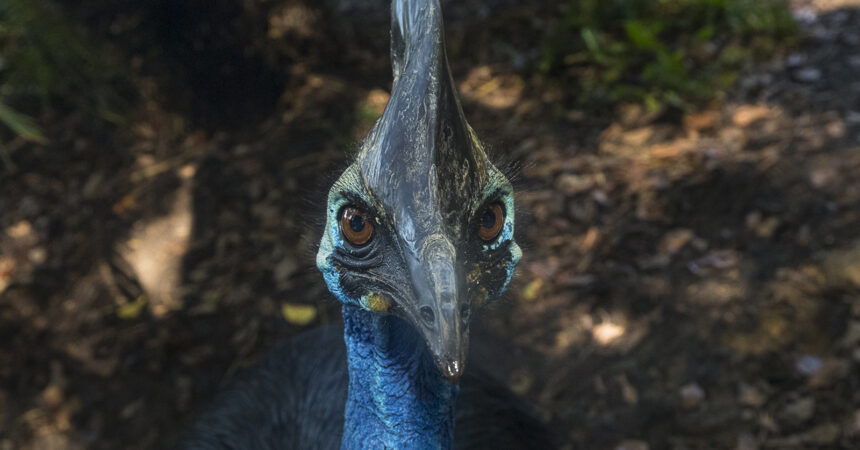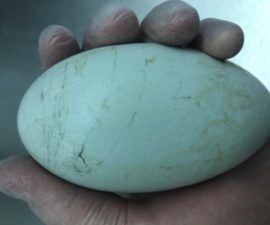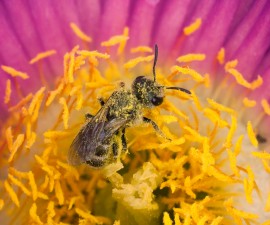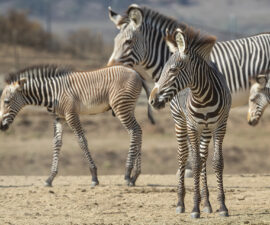Similar to an ostrich, southern cassowaries are tall, flightless birds with powerful legs. They are distinguished from other ratites (ostrich, emu, and kiwi) by the beautiful colors on their neck and head, along with a very large casque—a helmet-like growth on the top of their head. They also have an inner toenail that can reach five inches long and that can make their kicks more dangerous than other ratites. They use their adaptations to defend their territory and offspring from any potential danger.
Cassowaries are fascinating birds. The way they run and investigate things can be entertaining to watch, especially if they get excited and start jumping or kicking. Amusing as some of their behaviors are, caring for this magnificent animal cannot be taken lightly.
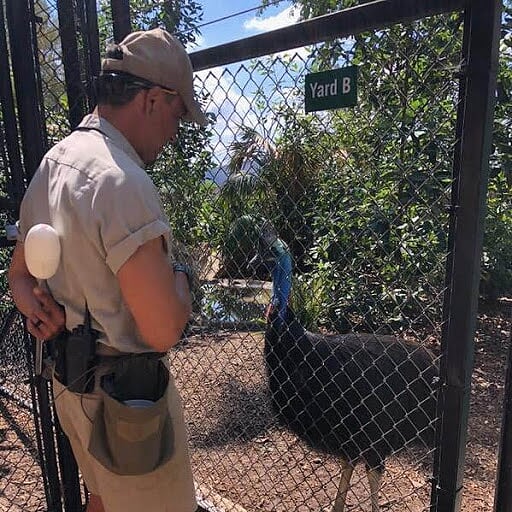
Here at the Safari Park, the cassowaries are always separated from the wildlife care specialists using methods of protective contact with the help of positive reinforcement training. We utilize these training techniques to communicate to the birds where we would like to to be while we do health and husbandry checks, as well as what we need them to do to allow us to check them over. Having a good relationship with each individual bird is key, since all the training we do with the cassowaries is dependent on their voluntary participation.
We are fortunate to have four southern cassowaries: two males and two females. One pair lives out at our off-site Bird Breeding Complex (BBC), while the others live in a habitat in Walkabout Australia, where guests have the opportunity to see them up close. There, we have a nine-year-old male, Maka, and a 2.5-year-old female, Yarra that live side by side.
All of the cassowaries at the Park are trained using the same techniques to create a positive experience for the birds during procedures or in the case of an emergency. One of their favorite training treats is grapes! Maka is more timid when it comes to training, while Yarra eagerly waits for us to start her session in the morning. We believe one of the reasons she is so eager to train is because we were able to create a strong bond with her at a younger age.
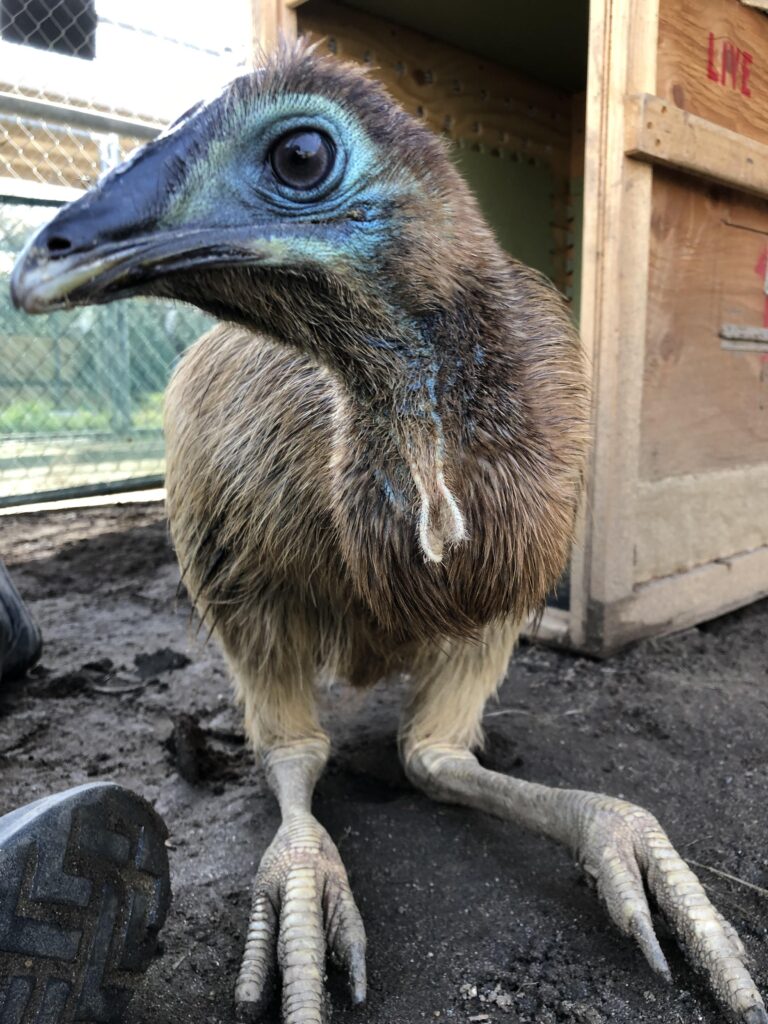
Yarra came to us when she was six months old from a different facility and first stayed at our off-site BBC. When these birds are that young, they are more manageable and aren’t deemed dangerous. This allowed us to have unprotected contact with Yara. During this time, we wanted to create a strong relationship with her to help us train and care for her in the future. As you can imagine, it was difficult to not give her lots of love and affection. Yet, it was crucial for us to keep our distance to allow her to grow and develop naturally as a cassowary.
Crate training and scale training were the first two skills we focused on since we knew we would need to move her into a bigger habitat and wanted to keep a close eye on her growth rate. Once she was about eight months old, she started showing signs of age-appropriate, yet aggressive behaviors towards the wildlife care specialists. These behaviors include: standing tall to look intimidating, hissing, and attempting to kick. When Yarra started displaying like this, we knew it was time to move her to a habitat that allowed us to interact with her using protective contact. Following our training steps, we successfully crated her and moved her to a bigger habitat at BBC, and later to Walkabout Australia. Accomplishing multiple stress-free moves was a rewarding experience for all of the wildlife care specialists—knowing that all of our hard work had paid off.
The southern cassowary is still considered Vulnerable in their native range, which is why our work at the San Diego Zoo Safari Park is so important. Hopefully, you will also feel inspired about Yarra’s story and come visit her at Walkabout Australia soon!
Brooke Johnson is a senior avian care specialist at the San Diego Zoo Safari Park.

